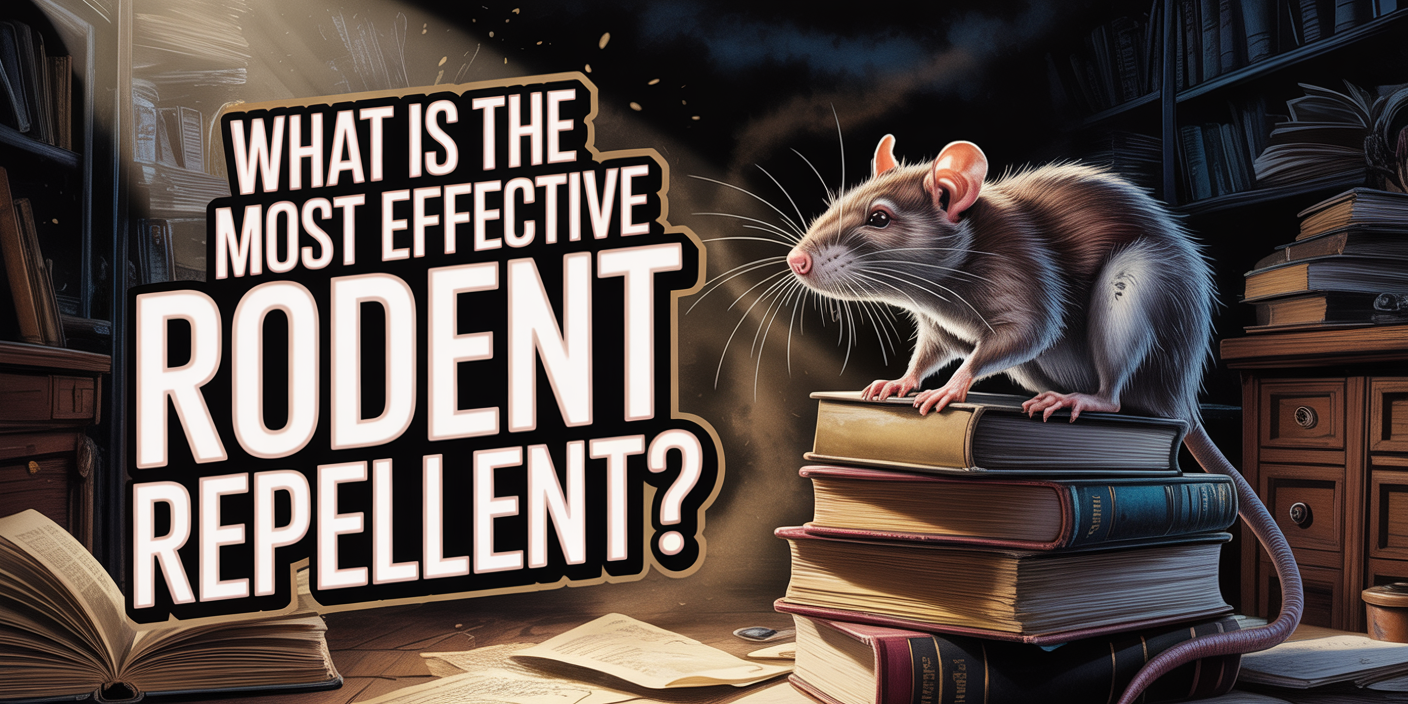The most effective rodent repellent isn’t a single product, it’s a combination of scent-based deterrents, structural exclusion, and habitat disruption. While natural solutions like capsaicin and peppermint oil can help, lasting results come from sealing entry points, removing attractants, and treating the entire perimeter with a smart, layered strategy. That’s why experts like AAAC Wildlife Removal don’t just mask the problem—they stop it at the source.
You’ve sprayed the peppermint oil, plugged in the ultrasonic gadget, and crossed your fingers. Still hearing scratching in the walls? Or noticing the occasional dropping on your countertops? Yeah, you’re not alone. Most “repellents” do a great job of smelling nice, or lighting up Amazon reviews, but don’t actually stop rodents from taking up residence in your attic or walls.
The real question isn’t just what smells scare them off, it’s what keeps them out for good. Rodents are stubborn, clever, and built to survive, so once an infestation starts, the most effective repellent needs to work smarter than they do. And spoiler alert: it’s rarely found in aisle nine of your local hardware store.
If you’re tired of temporary fixes and ready to protect your home for real, you’re in the right place. Let’s break down what truly works, what’s just hype, and why AAAC Wildlife Removal delivers results that go beyond the bottle.
Why Natural Mouse Repellents Are Worth Your Attention
Natural repellents like capsaicin, eucalyptus oil, and bergamot essential oil have shown real bite against rodents in controlled studies—one field trial saw capsaicin-treated seeds suffer 86 % less mouse predation compared to untreated controls. These plant-based compounds irritate a rodent’s sense of smell without harming humans, creating an unpleasant odor barrier that can push the animals to easier foraging grounds.
Beyond lab data, botanicals carry perks most chemical pest sprays can’t match. They break down quickly in soil and air, pose minimal risk to kids or pets, and sidestep the regulatory red tape tied to stronger pesticides. Trials on eucalyptus oil, for instance, documented measurable avoidance behavior in house rats—proof that “smells good to us” can still spell “leave now” for rodents.
Quick-Hit Benefits at a Glance
- Low toxicity: Safer around curious toddlers and nosy pets
- Eco-friendly breakdown: No heavy residues lingering in your garden beds
- Easy reapplication: Spray, sachet, or soak—no special gear required
- Targeted impact: Causes discomfort to rodents without collapsing local ecosystems
Natural doesn’t always equal permanent, though. AAAC Wildlife Removal leverages plant-powered repellents as an opening move, then pairs them with exclusion repairs and habitat tweaks—the triple threat that turns a pleasant smell into a long-term eviction notice.
Pest Control: Natural Rat Repellent Methods That Work
Natural solutions often get dismissed as too mild, but a handful can actually shift rodent behavior—when used correctly and consistently. The goal isn’t just to repel but to deter persistent behavior, disrupt patterns, and reinforce that your home isn’t a welcome mat. Each natural control method has its own limits, strengths, and best-use cases, especially when part of a broader prevention plan.
1. Using Peppermint Oil to Repel Rodents the Right Way
Rodents hate menthol’s intensity. Cotton balls soaked in high-grade peppermint oil can disrupt nesting or foraging, but only if reapplied often. Light sprays won’t cut it. That includes peppermint spray, which may smell strong to us but fades fast without frequent reapplication.
2. Capsaicin Sprays as a Potent Rodent Repellent
Rodents learn fast, but they still avoid areas laced with capsaicin. This chili-derived irritant messes with their sensory systemsand helps deter mice from returning to gnawed zones. It’s especially useful on chew-prone spots like wiring and insulation.
3. Essential Oils That Help Get Rid of Mice Naturally
These oils have all triggered avoidance behavior in mice and rats during controlled studies, making them useful in the early stages of a rodent infestation and as part of a broader mouse control strategy. They’re most effective when rotated and used at full strength. Diffuser pads or cotton sachets placed strategically work better than diluted sprays.
4. Garlic and Vinegar: Quick Fixes to Repel Mice
The pungency of garlic and acidity of vinegar can throw rodents off—briefly. They evaporate quickly and lose effectiveness unless reapplied almost daily. Good for short bursts, not long-term control.
5. Mint, Lavender, and Daffodils as Natural Mouse Control Deterrents
These plants offer light repellent effects when planted in borders or containers. Lavender has mild insect-repelling traits, and daffodils contain lycorine, which is toxic to some critters. These are better as mild deterrents than active solutions, especially when planted near the home’s perimeter to discourage rodent exploration.
6. Irish Spring Soap (Smells Clean, Doesn’t Mean Clean Results)
A popular DIY hack, but there’s little proof that Irish Spring bars send rodents packing. In some cases, rats have chewed right through it. Smells fresh, but don’t count on it.
7. Using Cat Litter to Get Rid of Mice with Predator Scent Cues
This one works by triggering survival instincts. Sprinkle a bit near entry zones and let the scent of a predator do the heavy lifting. Just don’t overdo it or use near vents.
8. Ammonia-Soaked Rags to Deter Rodents and Keep Mice Away
Mimics predator urine and causes rodents to rethink their location. Use with caution and only as a temporary disruption tool, not a primary method.
9. Ultrasonic Devices to Keep Rodents Away: Worth It or Waste?
These sound-based gadgets claim to irritate rodent hearing, but most studies show little to no long-term impact. Rodents habituate fast and often return after a few days.
Pro Tip: AAAC Wildlife Removal doesn’t rely on these methods alone. We layer repellents with physical exclusion, cleanup, and behavior-based strategies. Rodents don’t just follow their nose—they follow safety, shelter, and easy access. Remove those, and you remove the problem.
Rodent Control and Repellers Work Best With Strategy, Not Scent
Rodent problems don’t start with smells—they start with easy access around your home. No matter how strong your peppermint oil or how fancy the label on your ultrasonic gadget, nothing beats sealing entry points, disrupting nesting zones, and making your space uninviting from the ground up.
The most effective rodent repellent isn’t just one thing. It’s a combination of smart deterrents, targeted application, and structural prevention. That’s exactly why AAAC Wildlife Removal pairs plant-based solutions with expert inspections, habitat correction, and exclusion repairs, because real results come from strategy, not wishful spraying.
If rodents have already taken up residence or keep coming back, it’s time to stop playing defense. Call in the pros, lock down your space, and let effective repellent start where store-bought shortcuts stop. Repellents work when they’re backed by strategy, structure, and follow-through, not guesswork.




